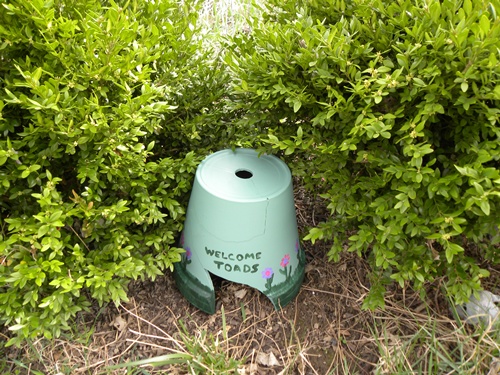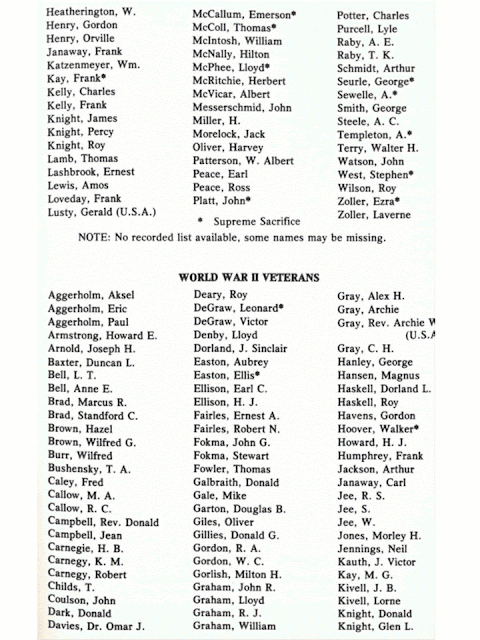 |
The Keillor family outside the Wallacetown Cheese Factory ca. 1900, which they owned from 1883-1918
Elgin County Archives
|
Through my current work at Backus-Page House Museum, I have had the honor of compiling research on our local area's veterans of the First World War. As I was working my way through the lists of names, I noticed that one name in particular seemed to be common in the Wallacetown area, and, being a Wallacetown resident myself, observed that there don't seem to be many traces of the family left in town. It wasn't until one of their descendants happened to stop in at the museum recently that I decided to pay a special interest to the family, and once I did there were many interesting stories to be found. I decided to compile some of their war-related material this week in the hopes that people will find it as interesting as I do, and of course with the goal of reaching relatives and family friends who have dispersed away from home. Without further ado, here are some anecdotes related to the
Keillor family of Wallacetown, who made their community proud during WWI.
Wallacetown Woman at 82 has Knit 260 Pairs of Socks (ca. 1940-45)
Mrs. Ada Keillor, Mother of Great War Veterans, Helping War Effort
Mother of four sons who fought in the last Great War, one of them paying the supreme sacrifice, Mrs. Ada Keillor, grand old lady of Wallacetown is setting an example by her war efforts. Eighty-two years old, Mrs. Keillor's busy fingers have not lost the knack of manipulating knitting needles, acquired as a girl in the pioneer district of Tyrconnell. Since the outbreak of the war, Mrs. Keillor has knitted more than 260 pairs of socks for men in the active services. Her score to October 31 of this year was 255 pairs- an average of more than ten pairs a month.
Think of that effort by a woman who has passed the four score mark, who continues to do her own housework and also cultivates a neat garden during the spring and summer months.
Mrs. Keillor, who is the widow of Alvro Keillor, well-known resident of Wallacetown for many years, knitted during the first Great War, just as she is knitting in this war. She knitted for her stalwart sons in the active service forces and she knitted for the sons of other Canadian mothers.
Truly a good and patriotic woman is Mrs. Ada Keillor, a charming and winsome old lady, a consistent Christian, a true friend and a good and loyal citizen of Canada. The people of Wallacetown district are justly proud of Mrs. Keillor and the record of war service she has achieved.
 |
Alvro Keillor with his wife Ada (Green) Keillor, on their wedding day, November 17, 1880.
Elgin County Archives |
In addition to her welcomed handmade contributions to the war effort, Mrs. Keillor also sacrificed four sons to the service, with one of them never to return. Here is the information on the Keillor boys, in addition to their photographs:
Captain Clifford M. Keillor
 |
| ca, 1918, Elgin County Archives |
Born June 11, 1891 in Wallacetown; served as a physician.
Captain Benjamin Franklin Keillor
 |
| Elgin County Archives |
Born August 23, 1881 in Wallacetown; residence listed as Dutton; next-of-kin Annie Maude Keillor, wife, of Dutton.
Frederick Anson Keillor
 |
| Elgin County Archives |
Born January 9, 1883 in Glencoe; residence listed as Edmonton; next of kin Martha Lillian Keillor, wife, Edmonton; served as a physician and surgeon.
Sydney J. Keillor
 |
| ca. 1915, Elgin County Archives |
Born in 1896 and enlisted on October 13, 1915. Served with the Canadian Infantry (Western Ontario Regiment) in the 18th Battalion and was killed on April 13, 1918. He is buried in Etaples Military Cemetery, Pas de Calais, France, grave reference XXIX.B.7A, and is commemorated on page 440 of the First World War Book of Remembrance.
If, like me, you noticed a high proportion of medicine-related service in this family, you will be interested to read the following article on how the surviving Keillor boys made their careers after their return.
19 Native Sons of Wallacetown Studied Medicine
West Elgin Community, Which has Never Attained Status of Village, Has Given Many Brilliant Men and Women to Other Professions
By Medicus- April 9, 1952
If a village in Elgin County were to boast that at least two of its native-born sons have studied Medicine, it could be proud of itself, because it is above the average of the whole country. It is surprising, then, to learn that Wallacetown, which never attained the status of a village, can claim that 19 of its sons have graduated in Medicine. Another source of pride [are] its nurses, lawyers, dentists, teachers and preachers (Baptist and Presbyterian), engineers, authors, professors in Canadian universities, politicians (a mayor of Toronto), contractors, successful businessmen and prosperous farmers. With such a galaxy of brains, it is not surprising that Wallacetown has been dubbed the intellectual centre of West Elgin (it is the home of the originator of The Outlooker column of the Times-Journal).
But back to the doctors. Alvro Keillor's family heads the list with three sons and a grandson: Dr. Ben F. Keillor, a retired Pension Medical Examiner of Ottawa, living in Vancouver; Dr. Fred A. Keillor, a successful surgeon and businessman of Edmonton (ex-alderman and mayor); Dr. Clifford M. Keillor, Canadian Pensions Commissioner of Ottawa, who hopes to retire soon to his home in Kingsville; and a grandson, Dr. Sydney Lucas, son of John and Ermyn (Keillor) Lucas, an intern of Victoria Hospital, London, Ont. ...
I hope these local stories serve as a reminder of Wallacetown's golden days, while also representing the often-overlooked accounts of veterans' lives after they answered their final roll call. Articles and information are courtesy of the Wallacetown Women's Institute's Tweedsmuir History of Wallacetown, and photos are once again thanks to Elgin County Archives.
Thanks for reading,
Delany (@DLeitchHistory on Twitter)






























